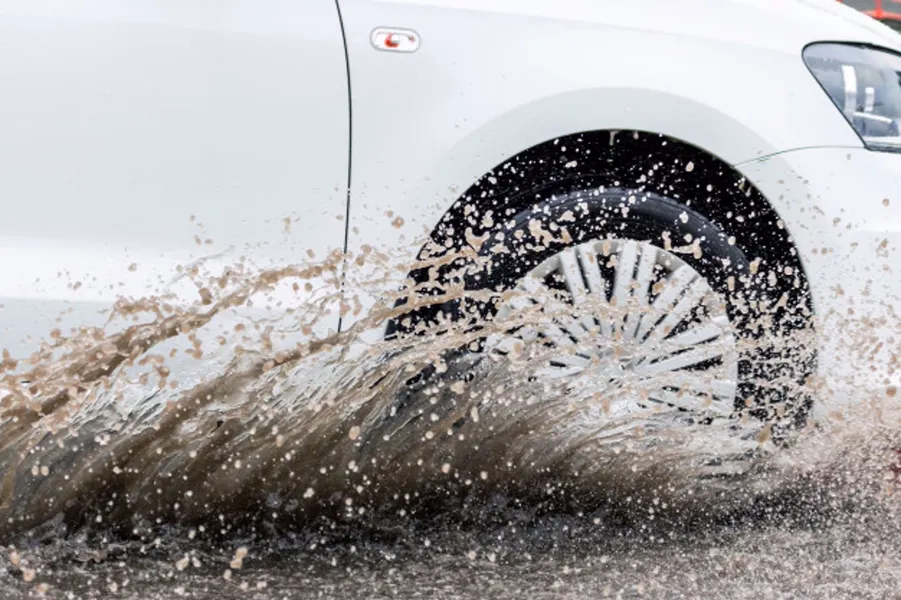With the icy roads of winter behind most of us, we’re all eager to cruise down the highway with our hair in the wind and our vehicles on cruise control. However, even if there’s a little moisture on the road, you could hydroplane and you should take the risk very seriously.
As you may already know, hydroplaning is what happens when you lose control of your vehicle on damp or wet roads. The loss of control comes from a layer of moisture forming between your tires and the road, which causes your vehicle to lose traction. How serious of a problem is hydroplaning? Statistics show 10% of all fatal car accidents are a result of hydroplaning, and as many as 73% of all accidents occur on wet roads.
Part of the reason hydroplaning is so deadly is that the proper measures you should take while hydroplaning can feel counterintuitive. Most people want to slam on their brakes when they feel they are losing control, but in a hydroplaning situation, this is the worst thing you can do. First, if you sense you’re losing control of your vehicle, you’ll want to take your foot off the gas and the brakes. Your goal while hydroplaning is to regain traction on the road, and grinding your tires to an instant halt will actually make the situation worse.
Second, instead of correcting your steering in an instant, you’ll actually want to shift your wheel in the direction that your vehicle is sliding. You don’t want to turn your wheel too hard, but you do want to help your vehicle regain traction without causing a collision. Once you feel in control of your vehicle, you can start to straighten yourself out in your lane. Losing control doesn’t mean you’ll spin out, and taking this measure will maximize your safety while navigating a scary situation.
Of course, as the saying goes, an ounce of prevention is worth a pound of cure. If you’d like to avoid hydroplaning, you’ll need to slow down when you’re driving on wet roads. Your risk of hydroplaning increases the faster you drive, but you don’t need to be driving fast to hydroplane either. Driving at or below the speed limit is recommended, and slowing down around curves is vital to maintain control of your vehicle.
However, if you want to cut down your chance of hydroplaning, you’ll need up-to-date tires. Worn or bald tires are already a risk factor for their poor traction, and wet roads dramatically amplify this problem. A tire’s size and treads also affect how likely you’ll hydroplane. This is a subject that’s worth its own article, but if you’d like to learn if your tires are safe, feel free to give me a call or send me a message. Tires are just one area of expertise that I’m happy to share with customers when I can.
Hydroplaning is a serious issue, but you and your family members don’t have to be victims of it. I hope these tips will help you stay safe in these warm and rainy months.








